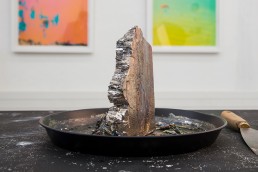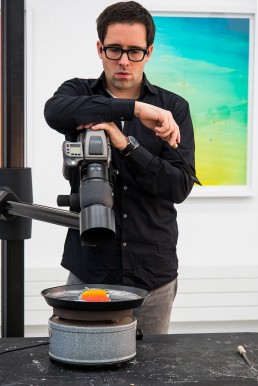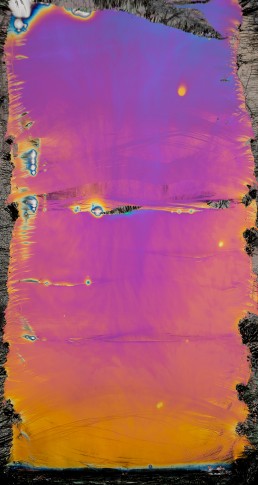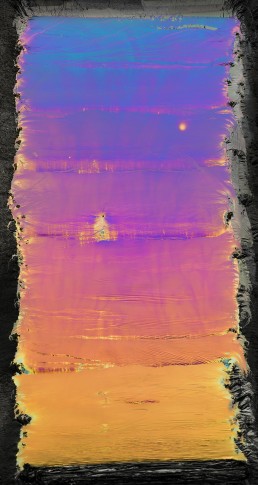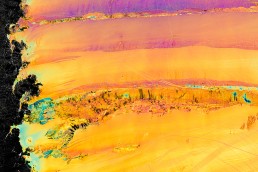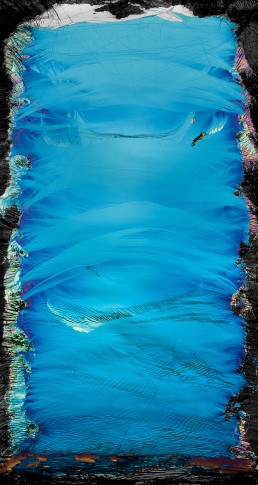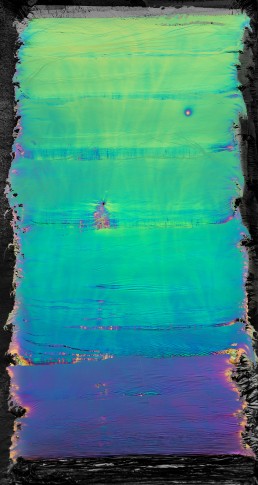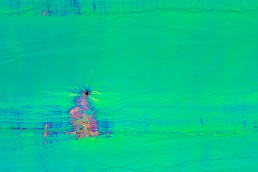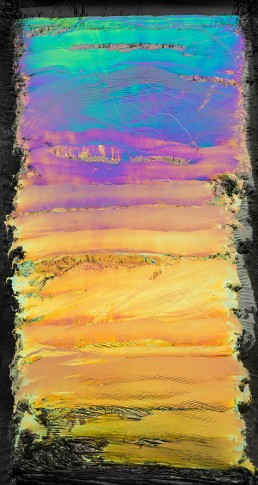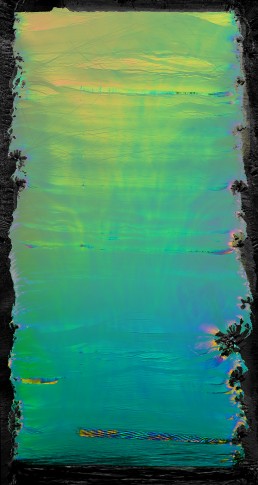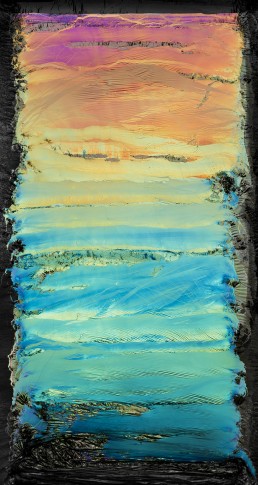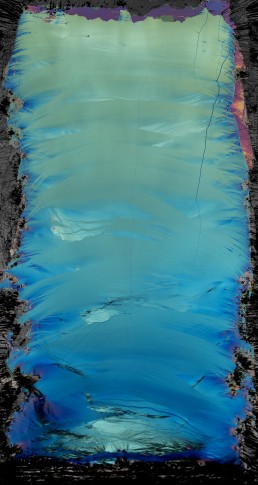Painting or photograph?
Swiss artist Fabian Oefner continues to explore the possibilities of photography through his latest series of work, ‘photographic paintings’. At a distance, the compositions most closely recall the quality and characteristics of painting, with subtly smooth gradients seemingly applied across each canvas surface. Bringing to mind Mark Rothko’s rectangular register of colors, or Clyfford Still’s large-scale monochromatic abstractions, the works display what seem to be brush stroke structures, when they are in fact, not paintings at all…
When viewing Oefner’s ‘photographic paintings’ up-close, a variety of clues begin to unearth the compositions’ actual attributes as a photograph. Areas of the composition appear blurred, indicating the more technical origin of the artwork. The texture of the ‘paint’ bears a graininess common to large prints. There is a faint aroma of baryta coming from the print — a chemical used in high quality photographic papers.
The material used to create the colors and structures is bismuth — an element with characteristics similar to lead. Oefner has melted several pounds of this metal in a large pan and — using a spatula — has removed the surface layer of the liquid medium. Once uncovered, the exposed metal immediately reacts to air and creates a range of vibrantly coloured gradients. The raw and organic quality of the material gave Ofner limited control over the occurring colors, making the final composition highly influenced by chance.
The second half of the creation process is when Oefner introduces photographic techniques. As soon as the metal is exposed to air, it continually changes in appearance, color and shapes. Oefner captures this process with a camera, documenting temporal compositions which only exist for a few seconds. The images are then minimally edited on the computer where dust particles and similar image defects are removed. The subsequent printing transfers the work, once again, from a photographic, digitally abstract piece into a tangible, visual experience.
(Source: Designboom)

